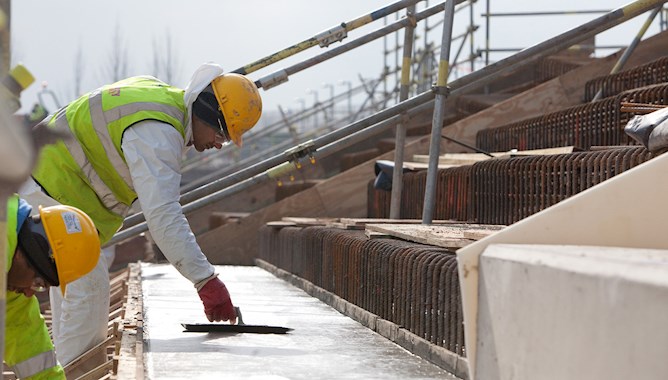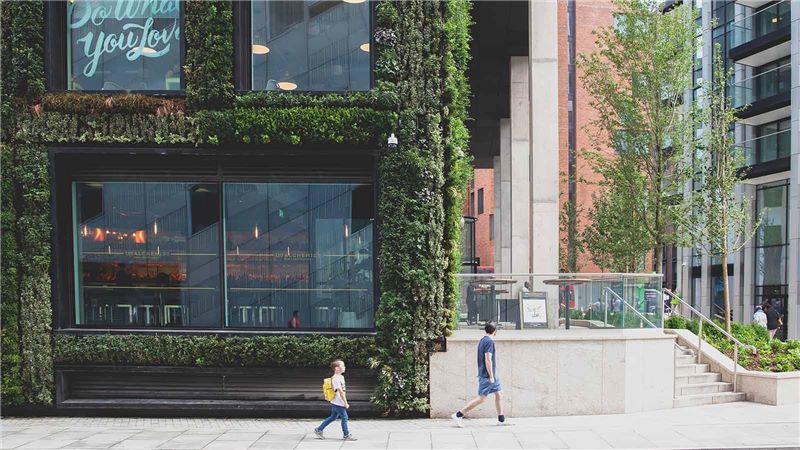Low Carbon Cassettes
THE CHALLENGE
Shaping cities. Building communities. Leaving legacies. As an industry, the built environment is uniquely placed to make a positive impact. But despite the good already being achieved, we have to do better - and we are acutely aware of our industry's impact on the planet.
From the resources we use, to the waste we generate, the industry is responsible for nearly 40% of carbon emissions. How do we spearhead positive change and help lead our industry to do the right thing? It starts with finding sustainable alternatives to the materials we use every day.
In 1824, Ordinary Portland Cement was transformational for the industry. Today, it accounts for a large part of the embodied carbon produced during the construction process – relatively speaking, if the cement industry were a country, it would be world’s third largest emitter of CO2.
And despite an ever-increasing demand for lower-carbon buildings, most new offices and commercial buildings are still reliant on steel frames with vast quantities of that same concrete – an approach that hasn’t significantly changed in decades. This typically represents 55-70% of the total embodied energy of a commercial office building.
Although low-carbon concrete is available, there are challenges around using them if you’re building in a traditional way. They can take longer to gain strength, so pouring them on site can add time – and, therefore, cost – to a building programme.
That’s why an innovative solution is now more vital than ever.
THE APPROACH
The concept began as a desktop study before being taken to a full-scale factory test in 2021. Working with designers and specialist trade contractors from our supply chain, alongside funding from Innovate UK, the Mace Tech team developed a low carbon cassette as an alternative methodology for the construction of steel frames.
Made with recycled steel and cement-free concrete, the cassettes are precast at project partner Oranmore’s plant, eliminating the need for metal decking. A floor constructed with these cassettes could potentially reduce its carbon footprint by as much as 75%, when compared with traditional materials and techniques.
Offsite construction means the cement-free concrete ‘Cemfree’ – developed by project partner DB Group – used in the cassettes has time and optimal conditions to gain strength. But the carbon savings don’t end there.
The cassettes themselves are demountable with the potential for re-use, and on one trial, reduced the dead weight of the structural frame by 25%. A lighter building means lighter foundations, which further reduces the amount of material required in a building’s construction. Current building standards often result in a level of ‘over engineering’ – catering for loads way beyond what’s required. So, the project also used sensors to collect data about how these materials behave and demonstrate how they can reduce the amount of material used without compromising safety.
That data informed a full factory trial and construction of a two-storey building using the cassettes, which was then subject to extensive testing by the Faculty of Engineering Science at University College London. This trial tested the new cassettes in as many different scenarios as possible – with exceptional results for emissions, labour and logistics.
The cassettes provide a low carbon, offsite solution with manufacturing integrated within a digital model - linking three threads of innovation. By removing the need for on-site testing, the new cassettes lower client risk and demonstrate that not only can they construct a building with a lower carbon footprint, but they can do it faster and even, perhaps, more cost-effectively.
Much like their 1824 counterpart, low carbon cassettes have the potential to be industry-altering. They are set to be used on a live project for the very first time at the end of 2022; the 11-storey commercial office building at our project for Urbanest at Palmerston Court. There we will be able to reduce the embodied carbon in the super-structure by 55%, saving in excess of 550t of CO2e together with a 40% programme reduction.
Low carbon cassettes are just one way in which we can transform the way we build, refurbish, operate and repurpose the built environment. There’s still more to be done but our determination to spearhead change is driven by our desire to innovate, and challenge convention to find better ways of working.













